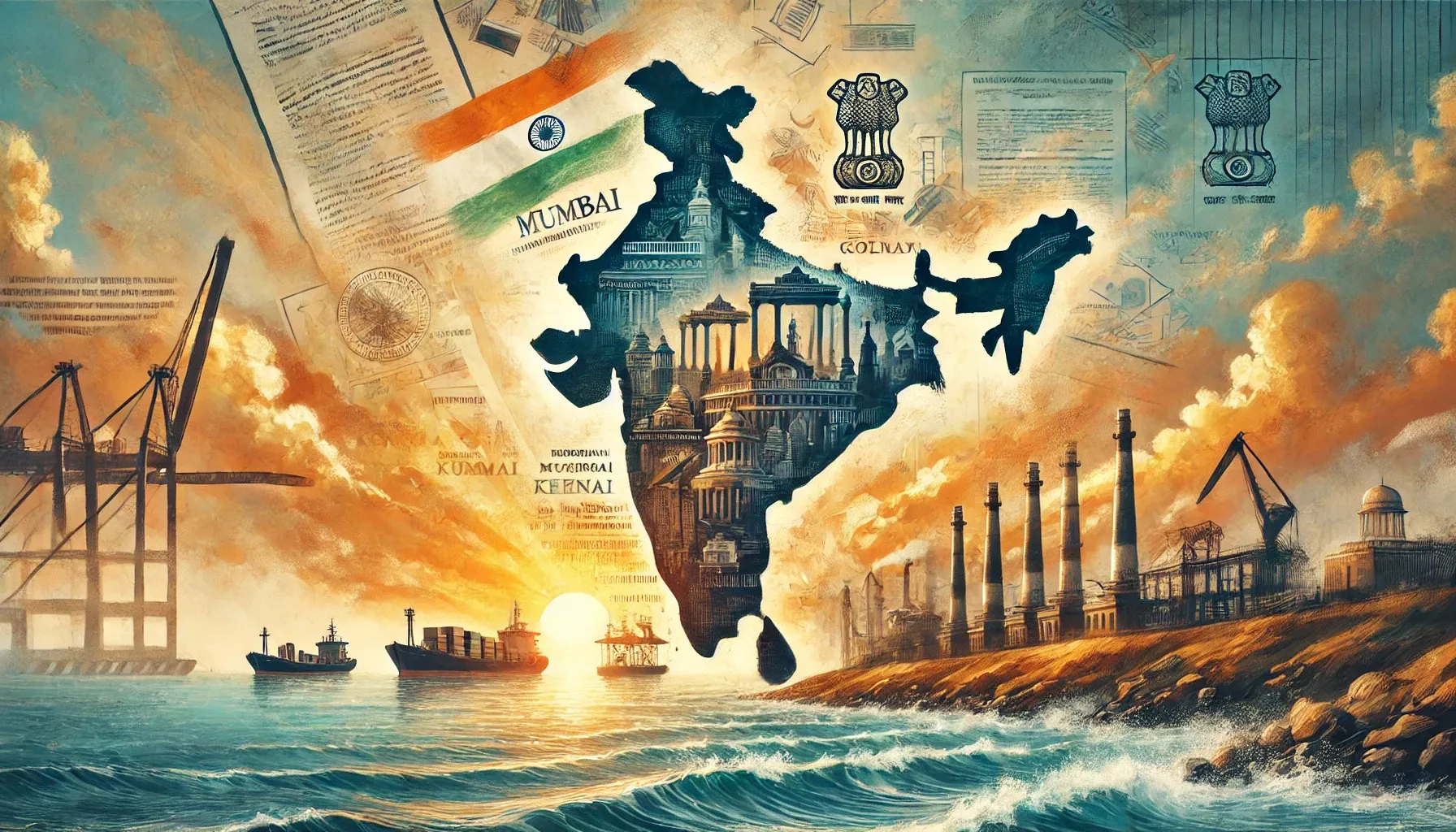UPSC
PIB
The Indian Ports Bill, 2025: A Maritime Reform Overview
Last Updated
5th April, 2025
Date Published
5th April, 2025
Share This Post With Someone

The Indian Ports Bill, 2025, introduced in Lok Sabha on March 28, 2025, marks a significant step towards modernizing India's maritime infrastructure. Replacing the outdated Indian Ports Act, 1908, this legislation aims to enhance port governance, promote sustainable development, and align with international obligations. This summary provides a concise yet comprehensive breakdown of the bill’s provisions, offering critical insights for aspirants preparing for competitive examinations.
Key Points:
Objective and Scope:
- Purpose: Consolidates laws related to ports, promotes integrated development, facilitates ease of doing business, and optimizes India’s coastline utilization.
- Repeal: Replaces the Indian Ports Act, 1908, to address modern maritime needs.
- Applicability: Covers all ports in India, including major and non-major ports.
Key Provisions:
- State Maritime Boards (SMBs):
- Establishes SMBs to manage non-major ports (state-managed).
- SMBs oversee planning, development, regulation, and pollution control of non-major ports.
- Composed of a chairperson, members with maritime expertise, and government representatives.
- Powers include issuing directions to port operators, imposing penalties, and ensuring compliance with safety and environmental standards.
- Maritime State Development Council (MSDC):
- Creates MSDC to ensure coordinated growth of the port sector.
- Chaired by the Union Minister for Ports, Shipping, and Waterways; includes state ministers and central government representatives.
- Functions include formulating a national port development plan, monitoring progress, and advising on policy and disputes.
- Port Development and Regulation:
- Central government to notify ports and their limits; regulates port entry/exit and conservancy services (e.g., navigation aids).
- Ports classified as public utilities; rates for services fixed by the central government or authorized entities.
- Introduces a port development plan by the central government, aligned with national policy.
- Adjudicatory Mechanisms:
- Establishes Port Adjudicatory Boards at central and state levels to resolve disputes (e.g., dues, conservancy services).
- Boards consist of a presiding officer (district judge rank) and two members with maritime expertise.
- Appeals against board decisions lie with High Courts within 60 days (extendable by 30 days for sufficient cause).
- Safety and Security:
- Central government regulates navigation, vessel movement, and port security.
- Vessel detention allowed for unpaid dues or violations, with release contingent on compliance or payment.
- Ports to maintain data on vessel movements, cargo, and passenger traffic.
- Pollution and Emergency Management:
- Ports must prepare disaster management and pollution control plans, approved by the central government or SMBs.
- Central government can issue directions during emergencies (e.g., war, natural calamities) and recover costs from port operators.
- Penalties for pollution include fines up to ₹10 lakh initially, ₹20,000 daily for continued violations, and up to ₹1 crore for major incidents.
- International Obligations:
- Aligns with India’s commitments under international maritime treaties.
- Central government to issue directions for compliance with global standards.
Penalties and Enforcement:
- Non-Compliance: Fines up to ₹1 crore for violating central/SMB directions or safety/navigation rules.
- False Information: Penalty up to ₹5 lakh for providing incorrect data to authorities.
- Recovery: Unpaid dues/penalties recoverable as land revenue arrears.
Miscellaneous:
- Rule-Making Power: Central government can frame rules on port limits, conservancy, adjudication, and penalties.
- Transitional Provisions: Existing officers/authorities under the 1908 Act continue until new appointments under the 2025 Bill.
- Data Management: Ports to maintain comprehensive records for transparency and efficiency.
Glossary
- State Maritime Boards (SMBs): State-level bodies managing non-major ports and their regulations.
- Maritime State Development Council (MSDC): National council for coordinated port sector development.
- Port Adjudicatory Boards: Bodies for resolving port-related disputes at central and state levels.
- Conservancy Services: Maintenance of navigation aids and port infrastructure.
- Port Development Plan: National strategy for integrated port growth and optimization.
- Public Utility: Designation ensuring ports serve public interest with regulated pricing.
- Disaster Management Plan: Strategy to address emergencies like natural calamities at ports.
- Pollution Control: Measures to prevent and penalize environmental damage at ports.